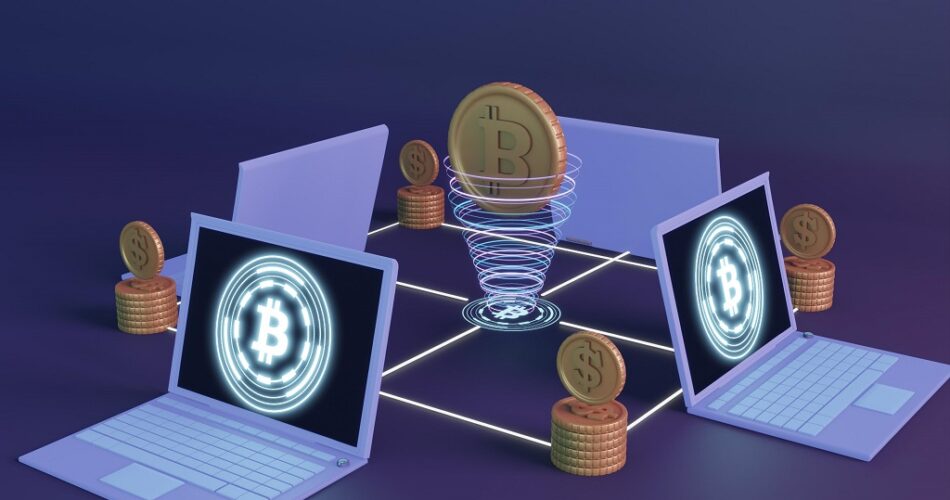The world of finance has been revolutionized by the advent of cryptocurrencies, and at the heart of this revolution are decentralized crypto exchanges. These platforms are reshaping the way we trade and store digital assets, offering a level of freedom and control that traditional financial systems have been unable to match. This article aims to provide an in-depth understanding of decentralized crypto exchanges, their importance in today’s financial landscape, and what the future holds for them.
Table of Contents
Understanding Cryptocurrencies
Cryptocurrencies have come a long way since the launch of Bitcoin in 2009. They have evolved from a niche interest into a global phenomenon, playing a pivotal role in the global economy. Today, there are thousands of different cryptocurrencies, each with its unique features and uses, from digital cash systems like Bitcoin to smart contract platforms like Ethereum.
What is a Crypto Exchange?
A crypto exchange is a platform that allows users to trade cryptocurrencies for other assets, such as other digital currencies or traditional fiat money. Crypto exchanges play a crucial role in the cryptocurrency ecosystem, providing a marketplace for buying, selling, and trading these digital assets. There are two main types of exchanges: centralized and decentralized.
What is a Decentralized Crypto Exchange (DEX)?
Decentralized crypto exchanges (DEX), often referred to as decentralized exchanges or DEXs, operate without a central authority. Instead, they run on blockchain technology, allowing direct peer-to-peer transactions. This structure offers several advantages over traditional centralized exchanges, including increased privacy, control over funds, and reduced reliance on a single point of failure. However, they also come with their own set of challenges, such as smart contract vulnerabilities and a lack of customer support.
DEX Types
Decentralized exchanges (DEXs) can be categorized into several types based on their underlying architecture and trading model.
Automated Market Makers
Automated Market Makers (AMMs) such as Uniswap or SushiSwap operate using a liquidity model. In this model, liquidity providers deposit pairs of tokens into a pool. The price of the tokens is then determined by a mathematical formula based on the ratio of the tokens in the pool. This allows traders to trade directly with these pools.
Order Book DEXs
Order Book DEXs, like EtherDelta or IDEX, function similarly to traditional exchanges. Buyers and sellers place orders on an order book, and the exchange matches these orders to facilitate trades.
Liquidity Protocol DEXs
Liquidity Protocol DEXs, such as Bancor or Kyber Network, utilize a network of liquidity providers who create liquidity pools. Traders can trade directly with these pools, with the price determined by a formula based on the pool’s balance.
Cross-Chain DEXs
Cross-Chain DEXs, like ThorChain or Polkadot’s upcoming DEXs, enable trading across different blockchains. This is a relatively new development in the DEX space and is expected to grow with the increasing interoperability between different blockchains.
Layer 2 DEXs
Layer 2 DEXs, such as Loopring or DeversiFi, employ Layer 2 solutions on top of existing blockchains to increase scalability and reduce fees. They offer a balance between the security of the underlying blockchain and the efficiency of Layer 2 solutions.
Each type of DEX comes with its own set of advantages and disadvantages in terms of liquidity, speed, cost, and ease of use. The choice between them depends on the specific needs and preferences of the user.
DEX Types Comparison Chart
| Type of DEX | Description | Advantages | Disadvantages |
|---|---|---|---|
| Automated Market Makers (AMMs) | AMMs use a liquidity model where liquidity providers deposit pairs of tokens in a pool. The price of the tokens is determined by a mathematical formula based on the ratio of the tokens in the pool. | High liquidity, simple to use, no need for order matching. | Potential for impermanent loss for liquidity providers, price slippage for large orders. |
| Order Book DEXs | These DEXs operate similarly to traditional exchanges, where buyers and sellers place orders on an order book. The exchange matches these orders to facilitate trades. | More control over prices for traders, familiar model for those used to traditional exchanges. | Lower liquidity, slower transaction times, more complex to use. |
| Liquidity Protocol DEXs | These DEXs use a network of liquidity providers who create liquidity pools. Traders can trade directly with these pools, and the price is determined by a formula based on the pool’s balance. | High liquidity, simple to use, no need for order matching. | Potential for impermanent loss for liquidity providers, price slippage for large orders. |
| Cross-Chain DEXs | These DEXs allow for trading across different blockchains. | Access to a wider range of tokens, potential for better prices due to larger market. | More complex to use, potential for smart contract vulnerabilities. |
| Layer 2 DEXs | These DEXs use Layer 2 solutions on top of existing blockchains to increase scalability and reduce fees. | Faster transaction times, lower fees, high security. | More complex to use, lower adoption rates. |
Key Features of Decentralized Crypto Exchanges
Decentralized crypto exchanges offer several unique features:
Anonymity and Privacy
One of the key features of decentralized crypto exchanges is the level of anonymity and privacy they offer. Unlike centralized exchanges, most decentralized exchanges do not require users to complete a Know Your Customer (KYC) process. This means users can trade cryptocurrencies without having to provide personal information, ensuring a higher level of privacy.
Control Over Funds
Decentralized crypto exchanges allow users to maintain control over their funds at all times. In a centralized exchange, users’ funds are held by the exchange, similar to a traditional bank. However, in a decentralized exchange, users retain control of their private keys and therefore have full control over their assets. This reduces the risk of loss due to exchange hacks.
Open and Transparent Operations
All transactions on a decentralized crypto exchange are recorded on the blockchain, providing a high level of transparency. This means that all trades are publicly verifiable and cannot be altered or deleted. This transparency helps to build trust among users and reduces the risk of fraudulent activity.
Interoperability and Cross-Chain Swaps
Some decentralized crypto exchanges offer interoperability, which means they allow for trading across different blockchains. This feature expands the range of available trading pairs and allows users to trade a wider variety of cryptocurrencies. In addition, some decentralized exchanges also support cross-chain swaps, which allow users to swap one cryptocurrency for another across different blockchains without needing an intermediary.
These key features make decentralized crypto exchanges an attractive option for many cryptocurrency traders. However, they also come with their own set of challenges, such as smart contract vulnerabilities and a lack of customer support. Therefore, it’s important for users to understand these features and risks before using a decentralized crypto exchange.
Centralized and Decentralized Crypto Exchanges Comparison
| Feature | Centralized Crypto Exchanges | Decentralized Crypto Exchanges |
|---|---|---|
| Control Over Funds | Centralized exchanges hold users’ funds, similar to a traditional bank. | Users maintain control over their funds at all times. |
| Anonymity | Users are typically required to complete a Know Your Customer (KYC) process, which involves providing personal information. | Most DEXs do not require KYC, providing a higher level of privacy and anonymity. |
| Trading Volume | Centralized exchanges generally have higher trading volumes, leading to better liquidity. | Trading volumes can be lower, which may impact liquidity, especially for less popular tokens. |
| Speed | Transactions are usually faster because they are off-chain. | Transactions can be slower due to blockchain processing times. |
| User Interface | Often user-friendly and intuitive, making them suitable for beginners. | Can be more complex and harder to navigate, especially for those new to crypto. |
| Security | Vulnerable to hacks as they are a single point of failure. However, they often provide insurance for digital assets. | Less vulnerable to large-scale hacks due to the decentralized nature. However, they can be exposed to smart contract bugs. |
| Customer Support | Usually offer customer support to assist with issues or queries. | Limited customer support, users are often required to solve issues independently. |
| Fiat Trading | Support fiat-to-crypto transactions. | Most do not support fiat currencies, operating solely with cryptocurrencies. |
| Regulation | More likely to be regulated, providing some level of legal protection. | Regulation is often unclear or non-existent, which can increase risk. |
Top Decentralized Crypto Exchanges
| Name | Unique Features |
|---|---|
| 1. Dydx | Access to free options trading for a month |
| 2. Apex Pro | Wide range of activities and services of additional income for traders |
| 3. Uniswap | High level of liquidity on many trading pairs |
| 4. Curve | |
| 5. Balancer | Universal automated market maker |
| 6. PancakeSwap | Low transfer fees |
| 7. Sushiswap | A wide range of tools for staking and farming |
| 8. Bancor | A wide range of tools to protect trading positions |
| 9. Dodo | Smart trading feature |
| 10. Okx Dex | Combines orders from different exchanges and networks |
How to Use a Decentralized Crypto Exchange

Setting Up a Wallet
Before you can start trading on a decentralized crypto exchange, you’ll need to set up a digital wallet. This wallet will hold your cryptocurrencies and allow you to interact with the blockchain. Wallets can be online (web-based), offline (hardware or paper wallets), or mobile (smartphone apps).
Here are some popular wallets that are compatible with decentralized exchanges (DEXs):
- Metamask: A browser extension wallet for Ethereum and ERC20 tokens. It’s widely used with many DEXs like Uniswap and Sushiswap.
- Trust Wallet: A mobile wallet that supports multiple cryptocurrencies and integrates with DEXs like PancakeSwap.
- WalletConnect: An open-source protocol for connecting decentralized applications to mobile wallets with QR code scanning or deep linking.
- Coinbase Wallet: A mobile wallet developed by Coinbase. It supports Ethereum, ERC20 tokens, and integrates with many DEXs.
- Ledger: A hardware wallet that can be used in combination with software like Metamask for added security.
- Trezor: Another hardware wallet that can be used with software wallets to interact with DEXs.
- TokenPocket: A multi-chain wallet that supports DEXs on various blockchains including Ethereum, Binance Smart Chain, and more.
Remember, it’s crucial to keep your wallet’s private keys secure, as losing them means losing access to your funds. Always double-check the website URL before accessing your wallet to avoid phishing attempts.
Connecting Your Wallet to the Exchange
Once your wallet is set up, the next step is to connect it to the decentralized exchange. This process will vary depending on the exchange and the wallet you’re using, but generally, it involves entering your wallet’s public address or scanning a QR code. Remember, you should never share your private keys or your seed phrase with anyone, including the exchange.
Depositing Funds
After connecting your wallet, you’ll need to deposit the cryptocurrency that you wish to trade. This usually involves sending the cryptocurrency from your wallet to an address provided by the exchange. Make sure to double-check all the details before sending any funds.
Trading Cryptocurrencies
Once your funds are deposited, you can start trading. Most decentralized exchanges operate on a system of smart contracts, which automatically execute trades based on certain conditions. You can set the terms of your trade, such as the amount and the price at which you’re willing to buy or sell. Once another user agrees to these terms, the trade is executed automatically.
Withdrawing Your Funds
After trading, you may want to withdraw your funds to your wallet. This process is similar to depositing funds but in reverse. You’ll need to provide your wallet’s address and specify the amount you wish to withdraw. Always double-check the details before confirming the withdrawal.
Remember, using a decentralized crypto exchange can be complex, especially for beginners. Always take the time to understand the process and the risks involved. And most importantly, never invest more than you can afford to lose.
Risks and Challenges in Using Decentralized Crypto Exchanges

Smart Contract Vulnerabilities
Smart contracts are the backbone of decentralized crypto exchanges, automating the trading process. However, if these contracts are not properly coded and audited, they can contain bugs or vulnerabilities. These vulnerabilities could potentially be exploited by malicious actors, leading to loss of funds.
Price Slippage
Price slippage refers to the difference between the expected price of a trade and the price at which the trade is executed. Due to lower liquidity in some decentralized exchanges, especially for less popular tokens, significant price slippage can occur. This could lead to trades being executed at less favorable prices.
Lack of Customer Support
Unlike centralized exchanges, most decentralized exchanges do not have a dedicated customer support team. If users encounter issues or difficulties, they often have to rely on community support or self-help resources. This can be challenging, especially for less tech-savvy users.
Regulatory Risks
The regulatory landscape for cryptocurrencies and decentralized exchanges is still evolving. Changes in regulations or enforcement actions by regulatory bodies could impact the operation of decentralized exchanges and the value of the cryptocurrencies traded on them.
User Error
In a decentralized exchange, users have full control over their funds, which means they are also responsible for their own security. If a user loses their private keys, sends funds to the wrong address, or falls for a scam, there is usually no way to recover the lost funds.
Liquidity Issues
Decentralized exchanges often have lower liquidity than their centralized counterparts. This can lead to wider spreads, higher slippage, and potentially less favorable trading conditions, especially for less popular tokens.
How to Create a Decentralized Cryptocurrency Exchange

Define Your Project
The first step in creating a decentralized cryptocurrency exchange is defining your project. This involves understanding the specific needs of your target audience and defining the features and functionalities of your exchange accordingly. You should also consider the legal and regulatory requirements in the jurisdictions you plan to operate.
Why Jurisdiction is Important?
Jurisdiction plays a crucial role in the operation of a Decentralized Exchange (DEX) for several reasons:
Regulatory Compliance: Different countries have different regulations when it comes to cryptocurrencies and exchanges. Some jurisdictions are more friendly towards cryptocurrencies, while others have strict regulations or even outright bans. Operating in a jurisdiction that is favorable to cryptocurrencies can make it easier to comply with regulations and operate your DEX legally.
Legal Protection: Operating in a jurisdiction with clear legal guidelines for cryptocurrencies can provide legal protection for your DEX and its users. In case of disputes or legal issues, having a clear legal framework to refer to can be beneficial.
User Trust: Operating in a reputable jurisdiction can help build trust with users. Users may be more willing to use a DEX that operates in a jurisdiction known for its strong legal protections and regulatory oversight.
Taxation: Tax laws vary greatly from one jurisdiction to another. Operating in a jurisdiction with favorable tax laws can help reduce the tax burden on your DEX and its users.
Access to Banking Services: Some jurisdictions are more open to providing banking services to businesses dealing with cryptocurrencies. Having access to banking services can make it easier to handle fiat transactions, if your DEX supports them.
Choose the Right Blockchain Platform
The next step is to choose a blockchain platform that supports the creation of decentralized exchanges. Platforms like Ethereum, Binance Smart Chain, and Polkadot are popular choices due to their support for smart contracts, which are essential for creating a decentralized exchange.
Develop Smart Contracts
Smart contracts are self-executing contracts with the terms of the agreement directly written into code. They govern the operations of your exchange, including trading, deposits, withdrawals, and fees. Developing these smart contracts requires a deep understanding of blockchain technology and programming languages like Solidity.
Test Your Smart Contracts
Once your smart contracts are developed, they should be thoroughly tested for any vulnerabilities or bugs. This is a crucial step to ensure the security of your exchange and the safety of your users’ funds. You can use testing frameworks like Truffle for this purpose.
Develop a User Interface
The user interface is the part of your exchange that users interact with. It should be user-friendly and intuitive, allowing users to easily navigate the exchange and execute trades. The interface should include features like wallet integration, trading pairs, order books, and transaction history.
Implement Security Measures
Security is a critical aspect of any cryptocurrency exchange. Implement robust security measures to protect user funds and data. This includes encryption, two-factor authentication, and regular security audits. It’s also important to educate your users about security best practices.
Launch and Marketing
Once everything is set up and thoroughly tested, you can launch your exchange. However, building the exchange is only half the battle. You also need to market your exchange to attract users. This can involve a variety of strategies, including SEO, content marketing, social media marketing, and partnerships with other companies in the crypto space.
Remember, creating a decentralized exchange is a complex task that requires a deep understanding of blockchain technology and smart contracts. It’s recommended to work with experienced blockchain developers or a blockchain development company.
The Future of Decentralized Crypto Exchanges
The future of decentralized crypto exchanges (DEXs) looks promising, driven by several key trends and developments:
Increased Adoption
As more people become aware of the benefits of decentralized exchanges, such as increased privacy and control over funds, we can expect to see increased adoption. This will likely be accompanied by an increase in the number and variety of tokens available for trade on DEXs.
Technological Advancements
Advancements in blockchain technology will continue to drive the evolution of decentralized exchanges. For example, the development of Layer 2 solutions and cross-chain interoperability could significantly improve the speed and efficiency of DEXs, making them more competitive with centralized exchanges.
Regulatory Developments
The regulatory landscape for cryptocurrencies and DEXs is still evolving. As regulators around the world gain a better understanding of this technology, we can expect to see more comprehensive and supportive regulations. This could help to increase trust and adoption of DEXs.
Integration with DeFi
Decentralized exchanges are a key component of the broader DeFi (Decentralized Finance) ecosystem. As DeFi continues to grow and mature, we can expect to see deeper integration between DEXs and other DeFi applications, creating a more seamless and efficient user experience.
Improved User Experience
As competition in the DEX space heats up, exchanges will need to focus on improving the user experience to attract and retain users. This could include more intuitive interfaces, better customer support, and more educational resources for users.
Conclusion
Decentralized crypto exchanges are a vital part of the cryptocurrency ecosystem, offering a level of freedom and control that traditional financial systems cannot match. While they come with their own set of challenges, the potential benefits they offer make them an exciting area of growth in the world of finance. As we move forward, it will be fascinating to see how these platforms evolve and shape the future of digital asset trading.
FAQs
What is a decentralized crypto exchange?
A decentralized crypto exchange is a platform that allows for direct peer-to-peer transactions, without the need for an intermediary. These exchanges operate using blockchain technology.
What are the advantages of using a decentralized crypto exchange?
Decentralized crypto exchanges offer several advantages, including increased privacy, control over funds, and reduced reliance on a single point of failure.
What are the risks of using a decentralized crypto exchange?
Risks include smart contract vulnerabilities, price slippage, and a lack of customer support. It’s essential to understand these risks and take measures to mitigate them.
What is the future of decentralized crypto exchanges?
The future looks promising, with ongoing advancements in blockchain technology and increasing acceptance of cryptocurrencies. However, the role of regulatory bodies and potential impact on the sector remains a topic of intense debate.


